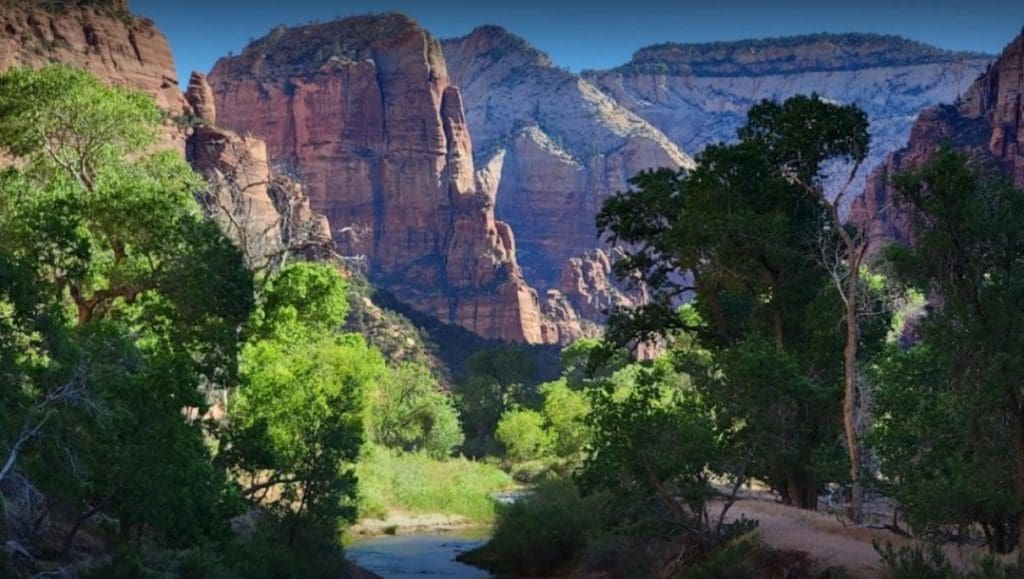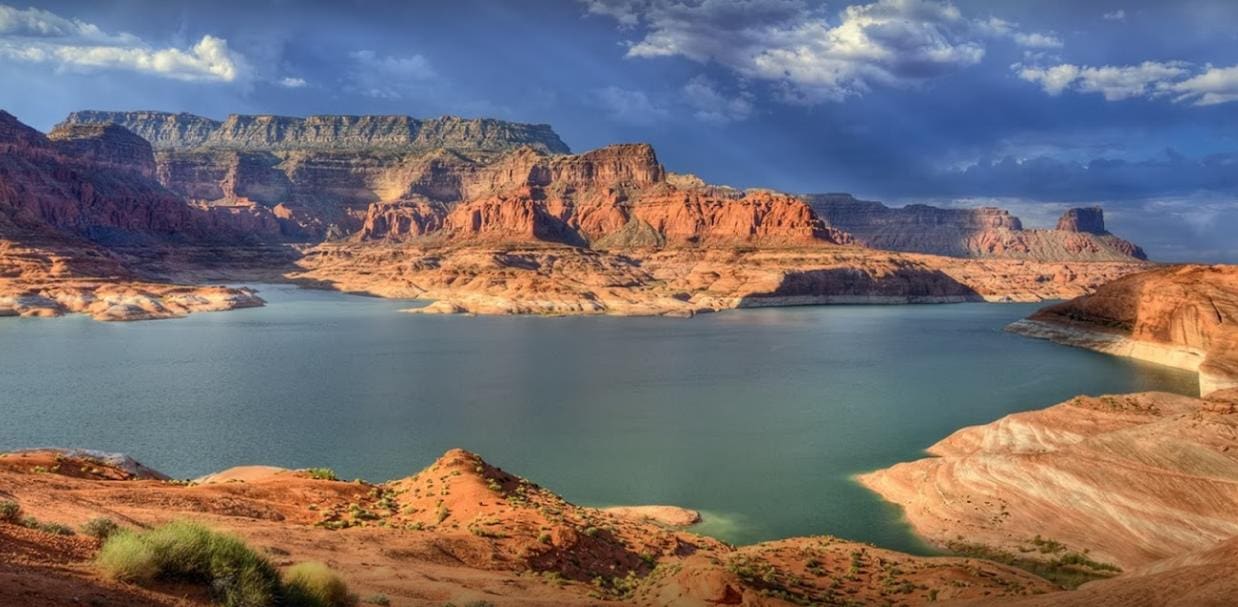The Grand Canyon National Park is one of the most iconic natural wonders of the world. Its vastness, beauty, and geological significance make it a must-visit destination for nature enthusiasts and adventurers alike. In this blog post, we will explore 40 fascinating facts about the Grand Canyon National Park that will leave you in awe of this magnificent wonder.
1. Location and Size
- The Grand Canyon is located in the state of Arizona, USA.
- It covers an area of approximately 1,217,403 acres.
- The park’s boundaries stretch for 277 miles along the Colorado River.
2. Geological Formation
- The Grand Canyon was formed by the erosive activity of the Colorado River over millions of years.
- The exposed rock layers in the canyon date back to approximately 1.8 billion years.
- The canyon’s depth reaches up to 6,000 feet at certain points.
3. UNESCO World Heritage Site
- The Grand Canyon National Park was designated as a UNESCO World Heritage Site in 1979.
- It was recognized for its exceptional natural beauty and geological significance.
4. South Rim vs. North Rim
- The South Rim of the Grand Canyon is the most visited part of the park, offering stunning vistas and numerous visitor facilities.
- The North Rim, located at a higher elevation, is less crowded and provides a more secluded experience.
5. Skywalk
- The Grand Canyon Skywalk is a glass-bottomed horseshoe-shaped bridge that extends 70 feet from the canyon’s rim.
- It offers visitors a thrilling view of the canyon floor, 4,000 feet below.
6. Wildlife
- The Grand Canyon is home to a diverse range of wildlife, including mule deer, mountain lions, bighorn sheep, and California condors.
- The park is also inhabited by numerous reptile and amphibian species.

7. Phantom Ranch
- Phantom Ranch, located at the bottom of the canyon, is the only lodging facility within the park.
- It can be reached by hiking, riding a mule, or rafting down the Colorado River.
8. Havasu Falls
- Havasu Falls is a stunning waterfall located within the Havasupai Indian Reservation, which is part of the Grand Canyon.
- The falls are known for their vivid blue-green color, which is caused by high levels of calcium carbonate in the water.
9. Colorado River
- The Colorado River, which carved the Grand Canyon, is approximately 1,450 miles long.
- It is one of the primary water sources for millions of people in the southwestern United States.
10. Hiking Trails
- The Grand Canyon offers a wide range of hiking trails, catering to all skill levels.
- The Rim-to-Rim trail, which spans approximately 24 miles, is a popular choice for experienced hikers.
11. Phantom Ranch to Rim
- The hike from Phantom Ranch to the South Rim is challenging and covers a distance of approximately 10 miles.
- It requires careful planning and preparation due to the extreme weather conditions and limited water sources.
12. Archaeological Sites
- The Grand Canyon has numerous archaeological sites that provide insight into the region’s ancient human history.
- Ruins of ancient Native American settlements can be found throughout the park.
13. Desert View Watchtower
- The Desert View Watchtower, located at the eastern edge of the park, offers panoramic views of the canyon and the Colorado River.
- It was designed by Mary Colter and is an excellent example of Pueblo Revival architecture.
14. Dark Sky Park
- The Grand Canyon National Park is designated as an International Dark Sky Park.
- It provides a unique opportunity for stargazing due to its remote location and limited light pollution.
15. Hopi House
- Hopi House, located on the South Rim, is a historic building that showcases traditional Hopi crafts and artwork.
- It was designed by Mary Colter and opened in 1905.
16. Fossils
- The Grand Canyon is home to numerous fossils, including those of ancient marine creatures and prehistoric plants.
- These fossils provide valuable insights into the region’s geological history.
17. Rafting
- Rafting down the Colorado River is a popular activity for adventure seekers visiting the Grand Canyon.
- It offers a unique perspective of the canyon’s towering walls and allows for exploration of hidden side canyons.
18. Geology Museum
- The Yavapai Geology Museum, located on the South Rim, provides visitors with information about the canyon’s geological formation.
- It offers interactive exhibits and displays of rock samples from different layers of the canyon.
19. Rim-to-Rim Crossing
- Crossing the Grand Canyon from the South Rim to the North Rim on foot is a challenging endeavor.
- It requires careful planning, physical fitness, and adequate supplies of food and water.
20. Grand Canyon Village
- Grand Canyon Village is the main visitor hub on the South Rim.
- It offers a range of accommodation options, restaurants, and visitor centers.
21. West Rim
- The West Rim of the Grand Canyon is managed by the Hualapai Tribe and offers unique attractions, including the Grand Canyon Skywalk.
- It is located outside the boundaries of the national park.
22. Tusayan Ruin
- Tusayan Ruin is an ancient Puebloan village located near the South Rim of the Grand Canyon.
- It provides a glimpse into the lives of the Native American people who inhabited the area centuries ago.
23. Colorado River Rafting Permits
- Permits are required for overnight rafting trips on the Colorado River within the Grand Canyon.
- These permits are highly coveted and can be obtained through a lottery system.
24. Grand Canyon Railway
- The Grand Canyon Railway offers a nostalgic journey from Williams, Arizona, to the South Rim of the canyon.
- It provides an alternative transportation option for visitors who prefer not to drive.
25. Horseshoe Bend
- Horseshoe Bend is a popular viewpoint located outside the boundaries of the national park.
- It offers a breathtaking view of the Colorado River as it curves around a massive rock formation.
26. Grand Canyon Conservancy
- The Grand Canyon Conservancy is a nonprofit organization that works to protect and preserve the park’s natural and cultural resources.
- It supports educational programs, research, and infrastructure improvements within the park.
27. Native American Tribes
- Several Native American tribes have historical and cultural connections to the Grand Canyon, including the Havasupai, Hopi, Navajo, and Hualapai tribes.
- Their presence adds to the richness and diversity of the park’s heritage.
28. Grand Canyon Association
- The Grand Canyon Association is the official nonprofit partner of the park.
- It operates bookstores, visitor centers, and educational programs, and supports scientific research and conservation efforts.
29. Wildlife Corridors
- The Grand Canyon is part of a larger network of wildlife corridors that allow animals to move freely between different habitats.
- These corridors are essential for maintaining biodiversity and ensuring the survival of species.
30. Grand Canyon Field Institute
- The Grand Canyon Field Institute offers educational programs and guided hikes led by expert instructors.
- It provides visitors with an opportunity to learn about the park’s natural and cultural history firsthand.
31. Fossil Discovery Trail
- The Fossil Discovery Trail, located on the South Rim, offers a self-guided tour of fossil exhibits and interpretive signs.
- It provides insight into the park’s rich fossil record.
32. Grand Canyon Music Festival
- The Grand Canyon Music Festival is an annual event that showcases a diverse range of musical performances in stunning natural settings.
- It celebrates the intersection of arts and nature.
33. Fire Management
- The National Park Service employs a comprehensive fire management program to protect the Grand Canyon from wildfires.
- Prescribed burns and other fire management techniques are used to maintain ecosystem health.
34. Bright Angel Trail
- The Bright Angel Trail is one of the most popular hiking trails on the South Rim.
- It offers stunning views of the canyon and provides access to Phantom Ranch and the Colorado River.
35. Grand Canyon Field School
- The Grand Canyon Field School offers a variety of educational programs for all ages, including photography workshops, geology courses, and archaeological expeditions.
- It provides a unique learning experience in a breathtaking setting.
36. Climate
- The Grand Canyon experiences a wide range of climate conditions due to its varying elevations.
- Summers are hot, and winters can be cold, especially at higher elevations.
37. Desert View Drive
- Desert View Drive is a scenic road that runs along the South Rim, offering numerous viewpoints and picnic areas.
- It is a popular route for leisurely drives and sunset watching.
38. Grand Canyon Star Party
- The Grand Canyon Star Party is an annual event that brings together astronomers and stargazers from around the world.
- It offers an opportunity to observe celestial bodies in one of the darkest skies in the United States.
39. Phantom Ranch Canteen
- The Phantom Ranch Canteen, located at the bottom of the canyon, offers basic supplies and refreshments to hikers and rafters.
- It is the only place within the park where visitors can purchase snacks and beverages.
40. Visitor Centers
- The Grand Canyon National Park has several visitor centers that provide information, exhibits, and ranger-led programs.
- They are excellent resources for planning your visit and learning about the park’s natural and cultural history.
With its awe-inspiring beauty and rich geological history, the Grand Canyon National Park offers endless opportunities for exploration and discovery. Whether you’re hiking along the rim, rafting down the Colorado River, or simply taking in the breathtaking views, the Grand Canyon is sure to leave a lasting impression. Plan your visit today and experience the wonders of this magnificent natural wonder.

